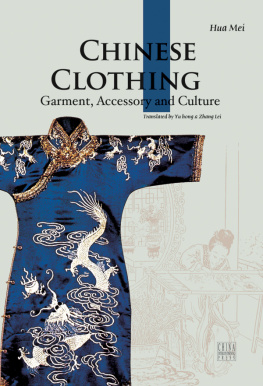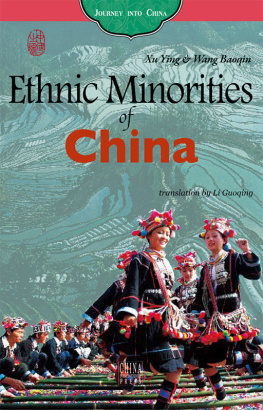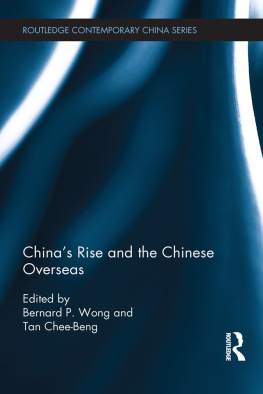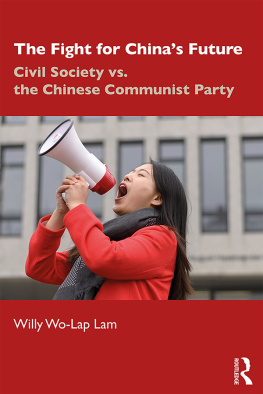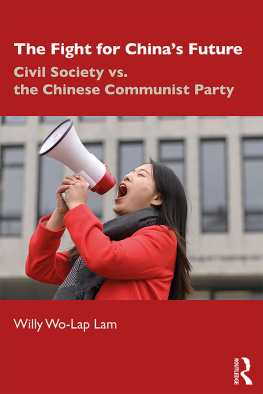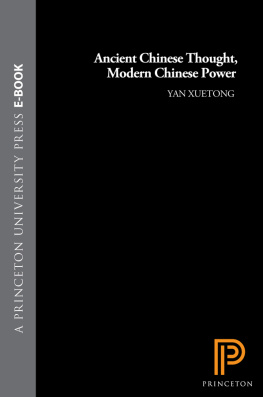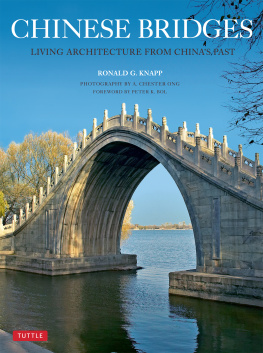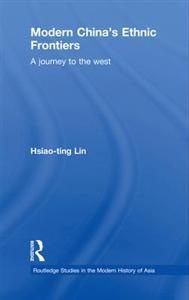
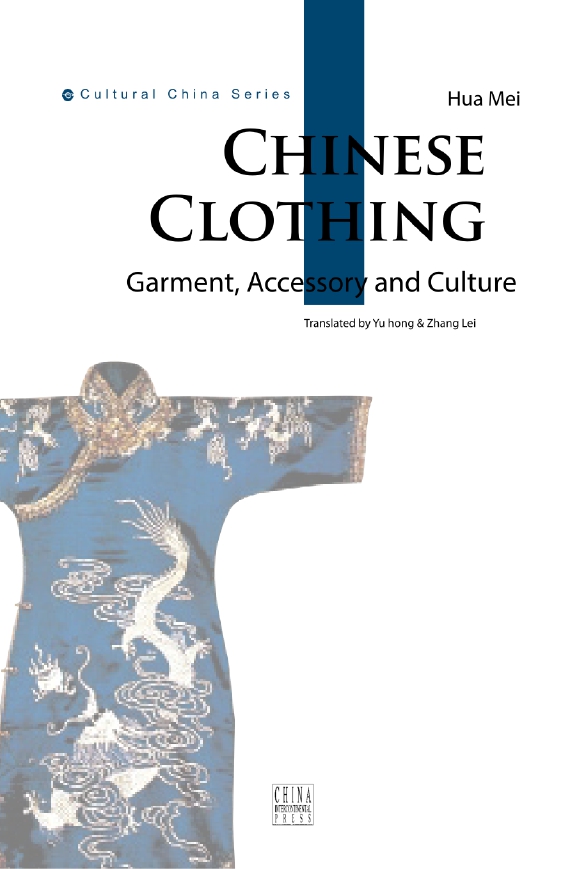
CIP
22010.1
ISBN 978-7-5085-1661-5
TS941.12
CIP2009180888

CHINESE CLOTHING
Garment, Accessory and Culture
Author: Hua Mei
Translator: Zhang Lei & Yu Hong
Polisher: Chen Bingmiao
Executive Editor: Zhang Hong
Art Director: Tian Lin
Production: Primary Colors Design CO.
Publisher: China Intercontinental Press (6 Beixiaomachang, Lianhuachi Donglu, Haidian District, Beijing 100038, China)
Tel: 86-10-58891281
Website: www.cicc.org.cn
Edition: Jan. 2010, 2nd edition
Contents
Executive Editor Zhang Hong

Art Director Tian Lin
Hua Mei Born in the city of Tianjin. She is the head and professor of the international School of Women of the Tianj in Normal University and head of the Huamei Clothing Ornament Culturology Study. Her major works include Human Cos tume and Ornament Culturology, Costume, Ornament and Chinese Culture, and etc. She edited several series of books and wrote the Garments and Ornament Column on People's Daily.
Preface
F rom the day garments became part of people's lives, they have been given different significance of social status, lifestyle, aesthetics and cultural concepts. Garments have always been the truest and most straightforward reflection of the social and historical scenes of any given time. In this sense, the history of garments is at the same time a vivid history on the development of civilization.
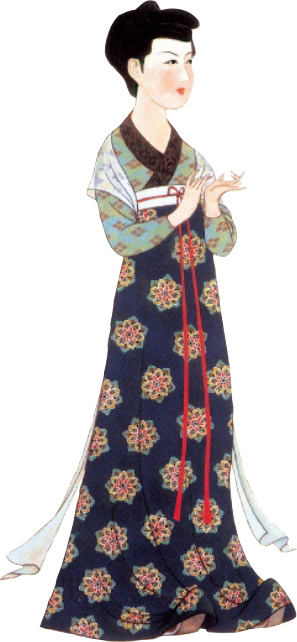
The Sui Dynasty lady dress, mostly were short jackets with short sleeves and long skirts. They tied the skirts over chest, which made them look very elegant. This way of dressing can be still seen in Korean lady dress. (Painted by Gao Chunming, selected from Lady Garments and Adornments of Chinese Past Dynasties written by Zhou Xun and Gao Chunming)
In the Chinese way of describing the necessities of life, clothing ranks at the top of "garments, food, shelter and means of travel." In this country with a long history of garments and ornaments, there is a wealth of archeological findings showing the development of garments, as well as their portrayals in ancient mythology, history books, poems and songs, novels and drama.
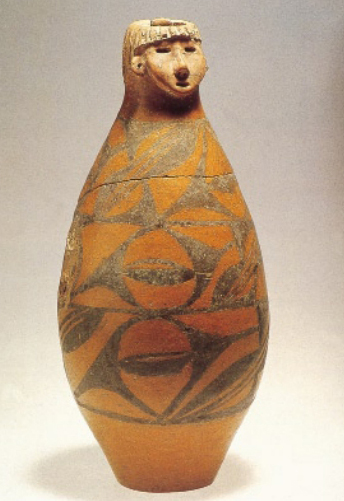
A relic of 5600 years history, the colored pottery bottle with a "head" shape bottle neck excavated in Dadiwan, Gansu Province in 1973. The pottery bottle is about 31.8 centimeters of the figure are clear with hair bang and a high nose. The bottle is painted with 3 rows of black color pattern composed of camber line triangle pattern and willow leaf pattern. (Photo by Li Zhanqiang)
The development of the Chinese garments can be traced back to the late Paleolithic age. Archeological findings have shown that approximately 20,000 years ago, the primitives who lived in the now Zhoukoudian area of Beijing were already wearing personal ornaments, in the form of tiny white stone beads, olive-colored pebbles, animal teeth, clam shells, fish bones and bone tubes, all meticulously perforated. Archeologists have attributed these to be body ornaments. Aesthetics might not have been the only concern when people wore ornaments at that time-ornaments were used as a means of protection against evil. The unearthed bone needles were still intact with oval shaped needle hole, a sign that people at that time were no longer satisfied with utilizing animal and plant materials. They already learned the technology of sewing together animal skin.
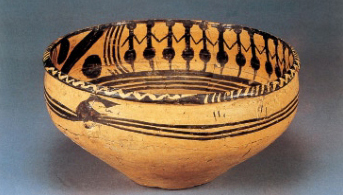
The picture shows the colored pottery basin excavated in Tongde Country, Qinghai Province in 1975. The pattern is people wearing "distended" skirts dancing hands in hands. This kind of skirt is seldom seen in traditional Chinese garments. (Photo by Li Zhanqiang)
Over 1,000 archeological sites of the Neolithic age (6,000-2,000 BC) have been found in China, geographically covering almost the entire country. The major means of production had transformed from the primitive hunting and fishing to the more stable form of agriculture, while division of labor first appeared in weaving and pottery making. Ancient painted pottery pots from 5,000 years ago were found in Qinghai Province of western China, decorated with dancers imitating the hunting scene. Some dancers wear decorative braids on their heads, while others had ornamental tails on the waist. Some wear full skirts that are rarely seen in traditional Chinese attire, but more similar to the whalebone skirt of the western world. In the neighboring province of Gansu, similar vessels were excavated, with images of people wearing what the later researchers called the "Guankoushan," a typical style found in the early human garments: a piece of textile with a slit or hole in the middle from which the head comes through. A rope is tied at the waist, giving the garment a dress-like appearance. Another vessel portrays an image of an attractive young girl, with short bangs on the forehead and long hair in the back. Against the delicate facial features and below the neck a continuous pattern is found with three rows of slanting lines and triangles. It may well have been a lively young girl in a beautiful dress with intricate patterns on the mind of the pottery maker. In addition to the clay vessels, images of primitive Chinese garments were found in rock paintings of the early people wearing ear ornaments. In the Daxi Neolithic site of Wushan, Sichuan, historical artifacts were found including ear ornaments made of jade, ivory and turquoise in round, oblong, trapezoid and even semi-circle shapes.
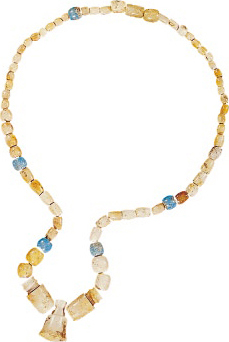
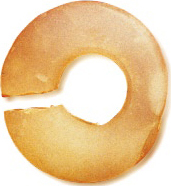

The neck adornments, butterfly shape jade plate and jade excavated in a Neolithic site.(Photo by Li Zhanqiang)
Along with the establishment of the different social strata, rituals distinguishing the respectable from the humble came into being, leading eventually to the formation of rules and regulations on daily attire. The Chinese rules on garments and ornaments started taking shape in the Zhou Dynasty (1,046-256 BC), regulating the royalty down to the commoners, and these were recorded in the national decrees and regulations. As early as in the Zhou Dynasty, garments were already classified into sacrificial attire, court attire, army uniform, mourning attire and wedding attire. This tradition was once broken during the Spring and Autumn Period (770-476 BC) and the Warring States Period (475-221 BC), in which numerous war lords fought for power and a hundred schools of thoughts contended. As a result, rigid rules on garments and ornaments were replaced by diversity of style, and the aristocratic class went after extravagance.
Next page
